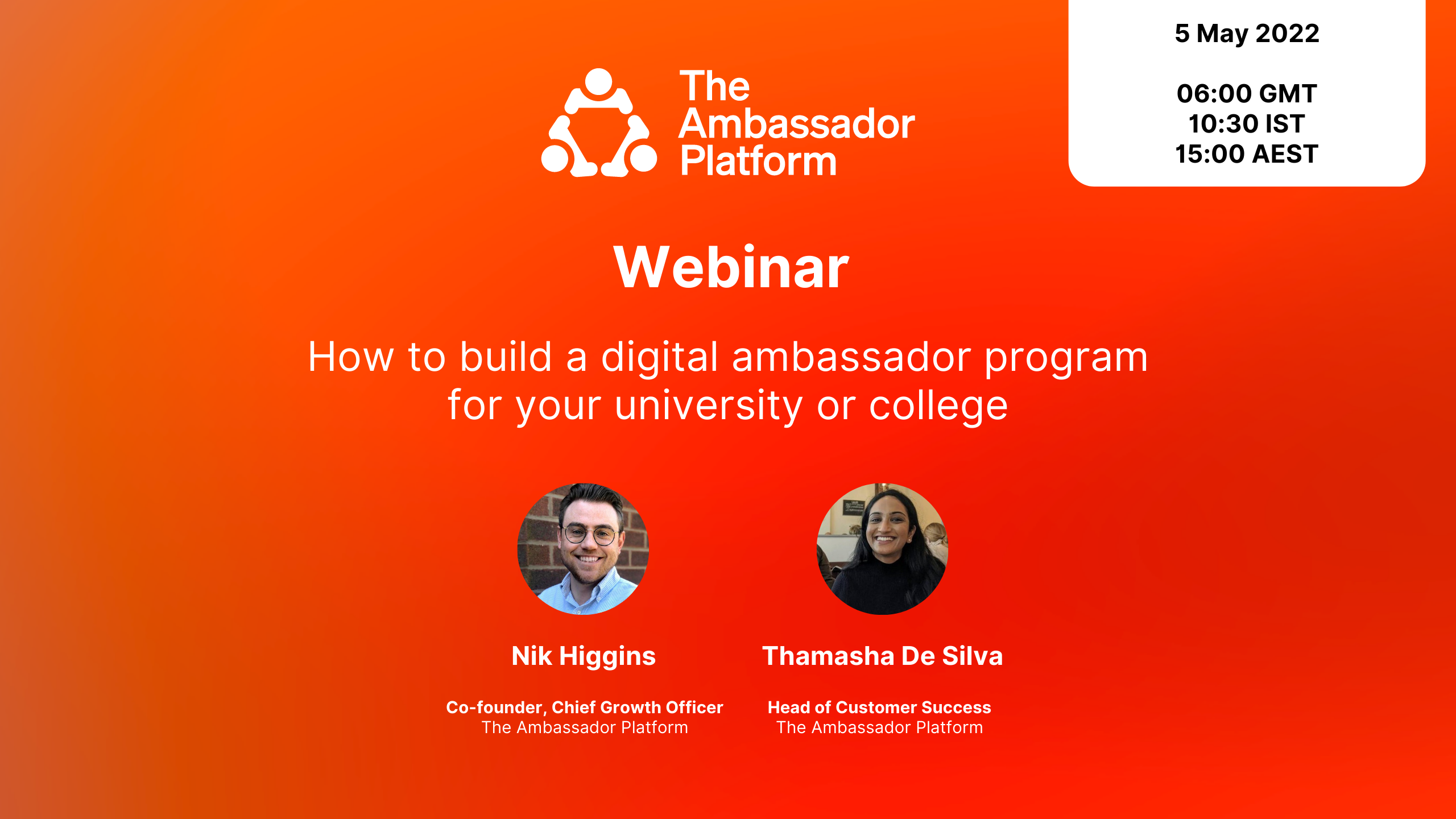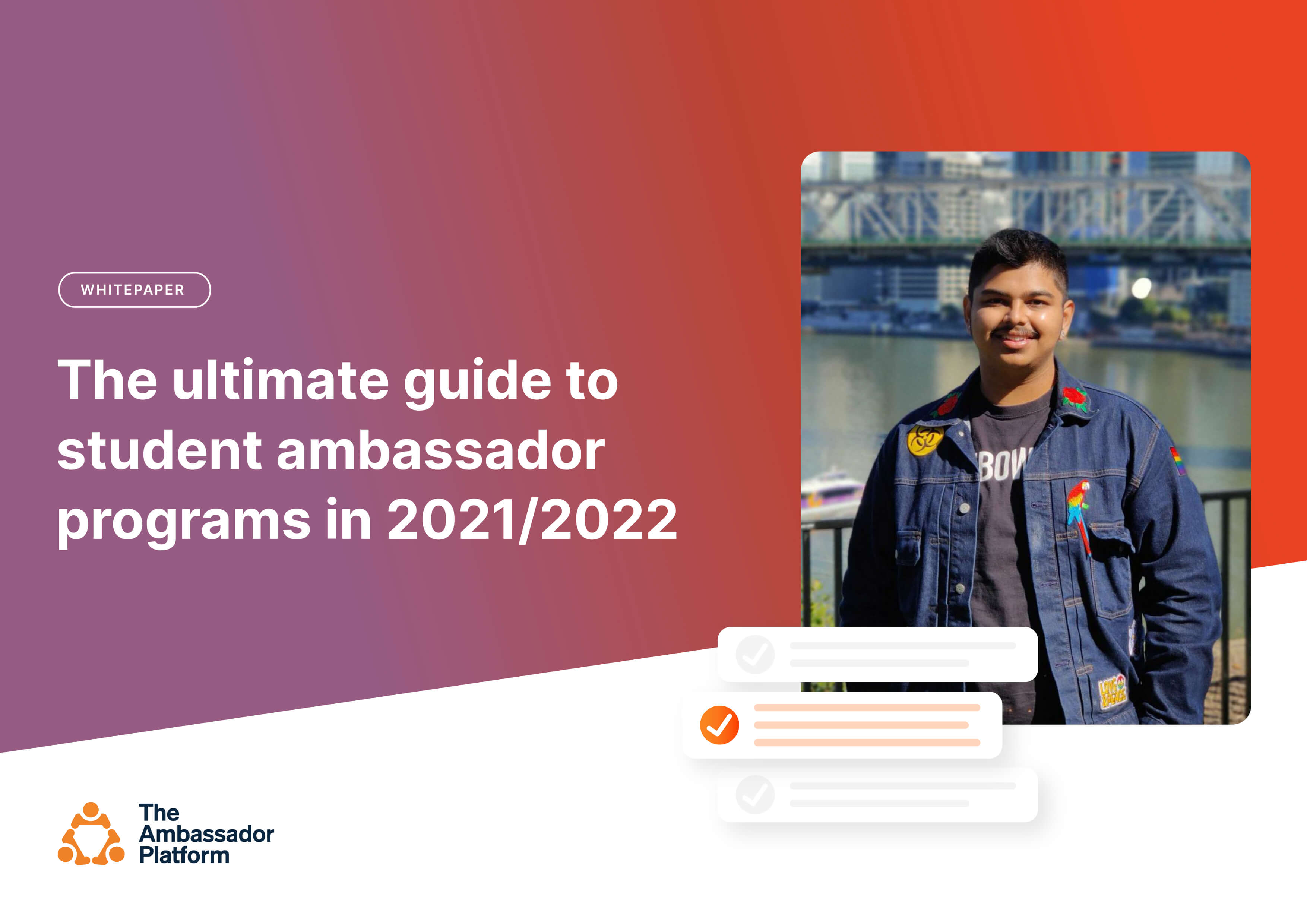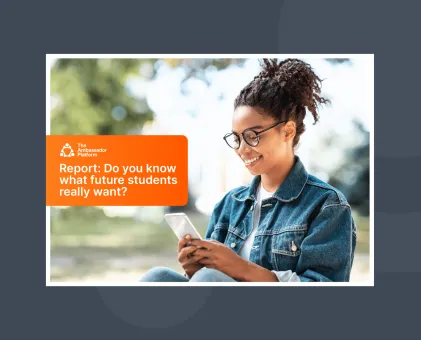4 easy steps to build an effective digital student ambassador program

Learning from the best in higher education marketing
More and more students are choosing their higher education based on nuances they can’t find in prospectuses or university fairs.
Instead, they want to know what they’ll experience on your campus – whether they’re an international student anxious about affordable housing in a new city, or the first in their family to attend university.
That’s where digital student ambassadors come in: students who’ve been there, done that and can share their experience transparently.
We spoke to trailblazing student recruitment teams from New Zealand to Oxford. Learning from their stumbling blocks and successes, we’ve put together the four key steps to assembling your perfect program of digital student ambassadors.
1) Plan your student ambassador program objectives
First up you need to nail down exactly what you want to achieve.
More brand awareness? A more diverse student body? Maybe a particular course needs a recruitment bump, or you want a steady stream of student-generated content showing what campus life is really like.
Thamasha De Silva was a student ambassador at UCL for four years, where she learned the importance of establishing your plan. ‘Whatever it is, having a clear concept of your purpose will help you in the long run.’
Download our ultimate guide to student ambassador programs
2) Have a robust recruitment strategy
You only need a few ambassadors to get your program started, but they have to be the perfect fit. Luckily, building your recruitment process is simple. Here are the three key components:
- A job description outlining your expectations, whether that be regular content goals or expected hours. For the Royal College of Art, this is about getting as ‘specific and granular as possible, so students can plan around their academic life.
- Benefits that go beyond payment. After all, students more than ever expect higher education to leave them with the transferable work skills you can offer.
- Some competition helps you get the very best out of your student body but also gives your ambassador team a sense of their value. Most importantly, says Thamasha, ‘you can understand who is applying and why.’ It doesn’t have to be much: an informal 20-minute interview works for Buckingham New University, or a couple of open-ended written responses, like NCUK.
3) Make sure you provide training
Now you have a team, it’s time to prepare them for engaging with prospective students. For Thamasha, this is an early chance to get buy-in, as well as cover essential safeguarding guidelines:
‘Take the time to introduce the program: what are you excited about? Give them some positive affirmation about why this particular group of students was selected. You can give them a positive reputation to live up to.’
With the right training, your program should ‘run itself’ with as little as five minutes of work each week reviewing interactions. At Manchester Metropolitan University, Ellis Platt supports his ambassadors with ‘an open group chat’ and student-led ‘catch-ups’ alone.
4) Set up incentivization
Finally, it’s time to come good on the range of benefits which attracted your ambassadors. Around half of programs offer payment, but all of them offer skills in areas like marketing, recruitment, and events planning.
In Auckland, ambassadors shadow the University’s professional marketing department. Elsewhere at the University of Sunderland, Digital Content Manager Jen Ray motivates her ambassadors by ‘enhancing their digital skills’ with social media engagement on platforms like TikTok.
Ultimately, you’ll know how best to incentivize your team when you know what makes them tick. The perfect combination of incentives can be uniquely catered to your team as they develop.
If Thamasha could share one piece of advice it’d be that ‘the quickest way to get to the gold standard is to just get started.’ That could mean picking one of these steps and refining it in your existing program, or starting from scratch with one small goal and recruiting three ambassadors.
Watch our webinar for more detail on how
to set up a Digital Ambassador Program




